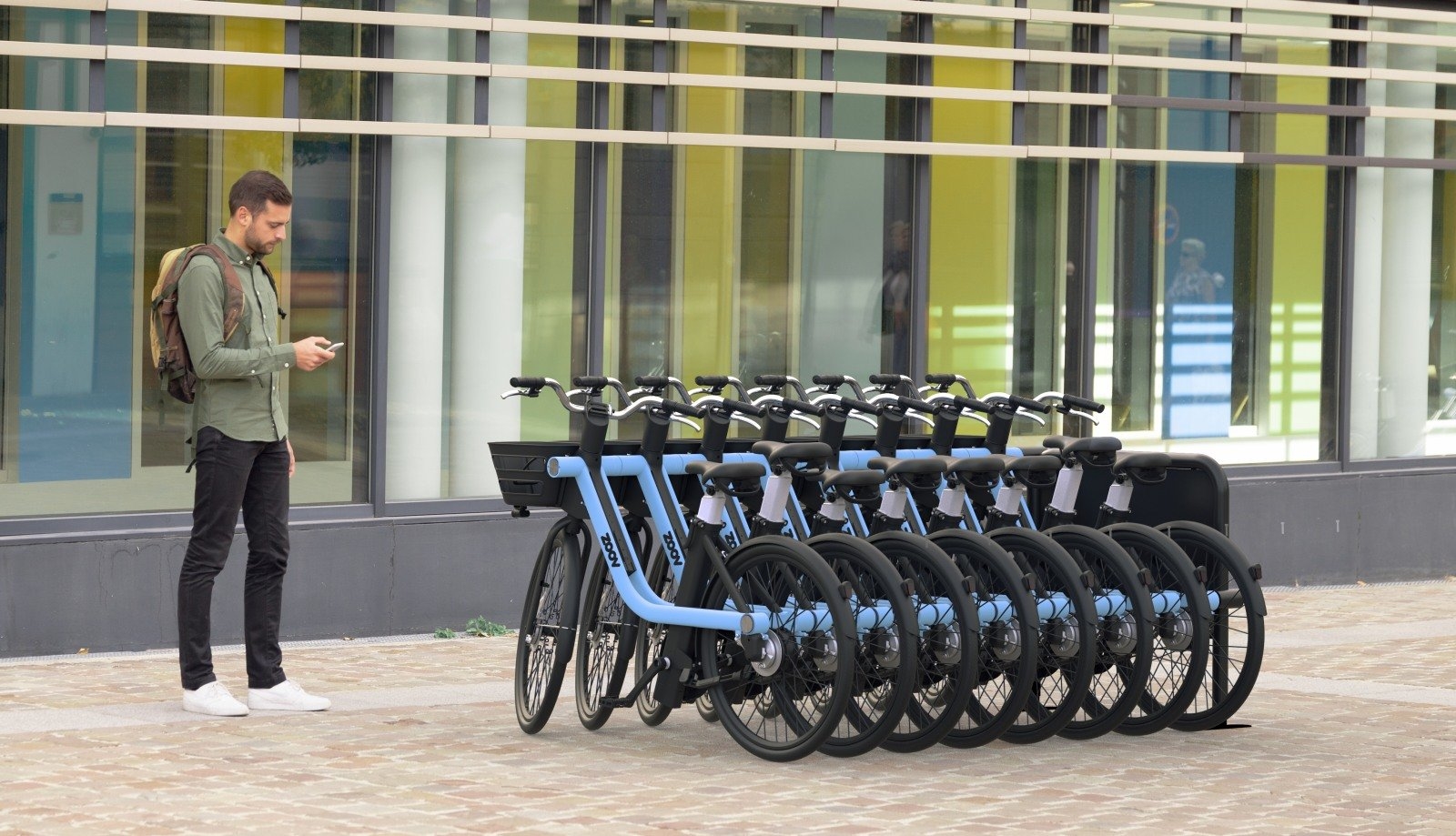What are eBike Sharing Services?
eBike sharing services are a type of shared mobility platform that allows users to rent electric bicycles for short periods. These services have gained popularity in recent years due to their convenience, affordability, and eco-friendly nature. By offering a sustainable transportation alternative, eBike sharing services contribute to reducing traffic congestion and air pollution in urban areas. eBikes themselves are traditional bicycles equipped with an electric motor, providing assistance during pedaling. This feature makes eBikes an attractive option for individuals seeking a more effortless and faster commuting experience compared to traditional bikes. eBike sharing services enable users to access these vehicles without the burden of ownership, maintenance, or storage.
In the broader context of shared mobility, eBike sharing services represent a growing segment of the market. Alongside bike-sharing, car-sharing, and scooter-sharing programs, eBike sharing services offer a versatile and adaptable transportation solution for various urban scenarios. Users can pick up an eBike from a designated station or use a dockless system, depending on the service provider.
When comparing eBike sharing services to traditional bikes or cars, several advantages become apparent. First, eBikes require less physical effort than traditional bikes, making them accessible to a wider range of users, including those with mobility limitations. Second, eBikes are more energy-efficient and environmentally friendly than cars, producing zero direct emissions and reducing the user’s carbon footprint. Lastly, eBike sharing services often provide a more cost-effective transportation option than car ownership or public transit, especially for short-distance commuting.

How to Choose the Right eBike Sharing Service
When selecting an eBike sharing service, several factors come into play to ensure a positive user experience. First, consider the pricing structure, which may include pay-per-ride, monthly, or annual plans. Evaluate your commuting needs and budget to determine the most cost-effective option. Some popular eBike sharing services include Lime, Jump (now part of Uber), and Bird. Availability is another crucial factor. Check if the service has a strong presence in your city or neighborhood, as well as whether it offers a dockless system or requires users to return eBikes to designated stations. A more extensive service area and dockless system can provide greater flexibility and convenience.
Bike quality is essential for safety and reliability. Research the durability, battery life, and safety features of eBikes provided by different sharing services. High-quality eBikes can better withstand regular use and offer a more enjoyable riding experience.
Lastly, consider additional features that can enhance your user experience. For instance, integrated app functionalities, GPS tracking, and mobile payment options can make renting and returning eBikes more seamless. Comparing these features across various eBike sharing services can help you make an informed decision.
Key Features of Top eBike Sharing Services
Popular eBike sharing services offer unique features that cater to various user needs and preferences. Integrated app functionalities, GPS tracking, and dockless systems are some of the most sought-after features. Lime, Jump, and Bird are among the leading eBike sharing services, each with its distinct offerings. Lime, for example, provides an intuitive app that allows users to locate, reserve, and unlock eBikes with ease. Jump, now part of Uber, offers eBikes with built-in GPS and smart locks, ensuring a secure and convenient riding experience. Bird, initially known for its e-scooters, has expanded into the eBike market, offering users a seamless transition between its scooter and eBike options.
GPS tracking is a valuable feature for eBike sharing services, enabling users to locate nearby eBikes and plan their routes. This functionality also allows companies to monitor eBike locations, reducing theft and improving overall management.
Dockless systems have revolutionized shared mobility, providing users with the freedom to pick up and drop off eBikes at any legal parking spot. This flexibility eliminates the need for dedicated docking stations and expands service areas, making eBikes more accessible and convenient.
Comparing these features across various eBike sharing services can help users make informed decisions based on their individual requirements and priorities.

Comparing Prices and Plans: Affordability and Flexibility
eBike sharing services offer various pricing models, including pay-per-ride, monthly, and annual plans. Understanding these options and their associated costs can help users make informed decisions and maximize their savings. Pay-per-ride plans are the most common and straightforward option, charging users based on the duration of their trip. For instance, Lime charges $1 to unlock an eBike and $0.15 per minute of usage, while Jump costs $0.39 per minute. These rates vary by location and service, so it’s essential to compare prices in your area.
Monthly and annual plans can provide better value for frequent users. Lime, for example, offers a monthly membership for $14.99, which includes 30 minutes of daily ride time. Jump’s monthly pass costs $15, providing unlimited 30-minute rides. Annual plans, when available, often offer additional discounts.
Cost-saving strategies include taking advantage of promotions and discounts, such as referral programs or first-time user deals. Users can also consider bundling eBike and e-scooter rides for further savings.
When comparing prices and plans, consider your riding habits and budget. Pay-per-ride plans may be more suitable for occasional users, while monthly or annual plans can benefit frequent riders. By carefully evaluating these options, users can select the most cost-effective and flexible plan for their needs.
eBike Quality and Maintenance: Ensuring Safety and Reliability
The quality of eBikes provided by sharing services significantly impacts user experience. Factors such as durability, battery life, and safety features should be considered when evaluating different services. Lime, Jump, and Bird eBikes are known for their robust construction and reliable performance. Lime eBikes, for example, feature durable aluminum frames and puncture-resistant tires. Jump eBikes have sturdy frames and adjustable seats for added comfort. Bird’s eBikes, while less common, offer similar quality and safety features.
Battery life is another crucial factor in eBike quality. Users should look for services with long-lasting batteries, ensuring they can complete their rides without interruption. Lime eBikes have a range of up to 37 miles on a single charge, while Jump eBikes offer up to 15 miles.
Safety features are essential for eBike sharing services. All three companies provide eBikes with front and rear lights, adjustable seats, and reliable braking systems. Additionally, Lime and Jump eBikes have integrated helmets for added safety.
Maintenance practices play a significant role in eBike quality and user experience. Regular inspections, repairs, and battery replacements are necessary to ensure eBikes remain safe and reliable. Lime, Jump, and Bird have dedicated maintenance teams that address issues promptly, minimizing downtime and inconvenience for users.

Environmental Impact: Sustainable Transportation Solutions
eBike sharing services offer an eco-friendly alternative to traditional transportation methods. By promoting shared mobility, these services help reduce carbon emissions and alleviate traffic congestion in urban areas. A study by the North American Bikeshare Association (NABSA) found that each shared eBike can replace up to four traditional car trips, significantly reducing greenhouse gas emissions. Moreover, eBikes produce no tailpipe emissions, making them a cleaner transportation option.
eBike sharing services also contribute to sustainable urban development. By encouraging active transportation, these services promote healthier lifestyles and reduce reliance on personal vehicles. This, in turn, leads to lower demand for parking spaces and reduced urban sprawl.
In addition to their environmental benefits, eBike sharing services foster a sense of community. By providing accessible and affordable transportation options, these services help bridge the gap between different socioeconomic groups and promote social equity.
When comparing eBike sharing services, consider their environmental impact. Look for companies that prioritize sustainability and invest in eco-friendly practices. For instance, Lime has committed to achieving 100% renewable energy across its operations by 2030. Similarly, Jump has implemented a battery recycling program to minimize waste and promote a circular economy.

User Experience: Ease of Use and Customer Satisfaction
User experience plays a crucial role in the success of eBike sharing services. A positive user experience can lead to increased customer satisfaction, loyalty, and repeat usage. When evaluating eBike sharing services, consider the following factors:
App Usability
An intuitive and user-friendly app can significantly enhance the user experience. Look for apps with clear instructions, easy-to-navigate interfaces, and seamless payment processing. Additionally, consider features like real-time availability tracking, GPS navigation, and integration with other transportation options.
Customer Support
Responsive and helpful customer support can turn a frustrating experience into a positive one. Seek out eBike sharing services that offer multiple channels of communication, such as phone, email, and chat support. Also, consider companies that provide 24/7 support and have a strong reputation for addressing customer concerns promptly and professionally.
Overall Satisfaction
User reviews and testimonials can provide valuable insights into the overall user experience. Look for feedback on factors like bike quality, ease of use, and customer support. Additionally, consider checking out industry awards and recognitions, as these can indicate a commitment to excellence and customer satisfaction.
For instance, Lime has received positive feedback for its user-friendly app and responsive customer support. Users appreciate Jump’s high-quality eBikes and easy-to-use app, while Bird has been praised for its commitment to safety and accessibility.

The Future of eBike Sharing Services: Trends and Innovations
As the eBike sharing industry continues to grow, companies are constantly seeking ways to innovate and improve the user experience. Here are some emerging trends and innovations to watch:
Smart Locks
Smart locks offer enhanced security and convenience for eBike sharing services. These locks can be opened and closed using a smartphone app, eliminating the need for physical keys. Additionally, smart locks can provide real-time updates on bike usage and location, making it easier for users to locate and unlock bikes.
E-scooter Integration
Some eBike sharing services are expanding their offerings to include e-scooters. This integration allows users to choose between bikes and scooters based on their needs and preferences. Additionally, it provides companies with a more diversified revenue stream and a larger customer base.
Gamification
Gamification involves incorporating game-like elements into eBike sharing services to encourage usage and engagement. For example, some companies offer rewards for reaching certain milestones, such as completing a certain number of rides or referring new users. Gamification can help increase user retention and loyalty, as well as promote sustainable transportation habits.
Autonomous eBikes
Autonomous eBikes, or self-driving eBikes, are still in the early stages of development. However, they have the potential to revolutionize the eBike sharing industry by eliminating the need for docking stations and reducing the need for human intervention. Autonomous eBikes can also optimize routes and reduce traffic congestion, making urban transportation more efficient and sustainable.
Blockchain Technology
Blockchain technology can provide enhanced security and transparency for eBike sharing services. By using blockchain, companies can create a decentralized network that allows users to track bike usage, location, and maintenance history. Additionally, blockchain can facilitate peer-to-peer bike sharing, allowing users to rent bikes directly from other users.
Solar-powered eBikes
Solar-powered eBikes are an eco-friendly innovation that can help reduce the carbon footprint of eBike sharing services. By using solar panels to charge the bikes’ batteries, companies can reduce their reliance on fossil fuels and promote sustainable energy practices.

